Your cart is empty
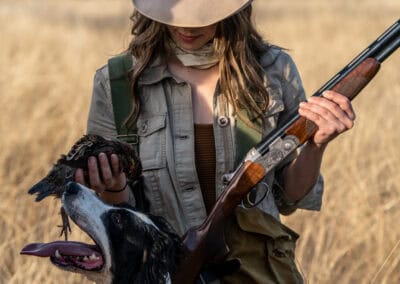
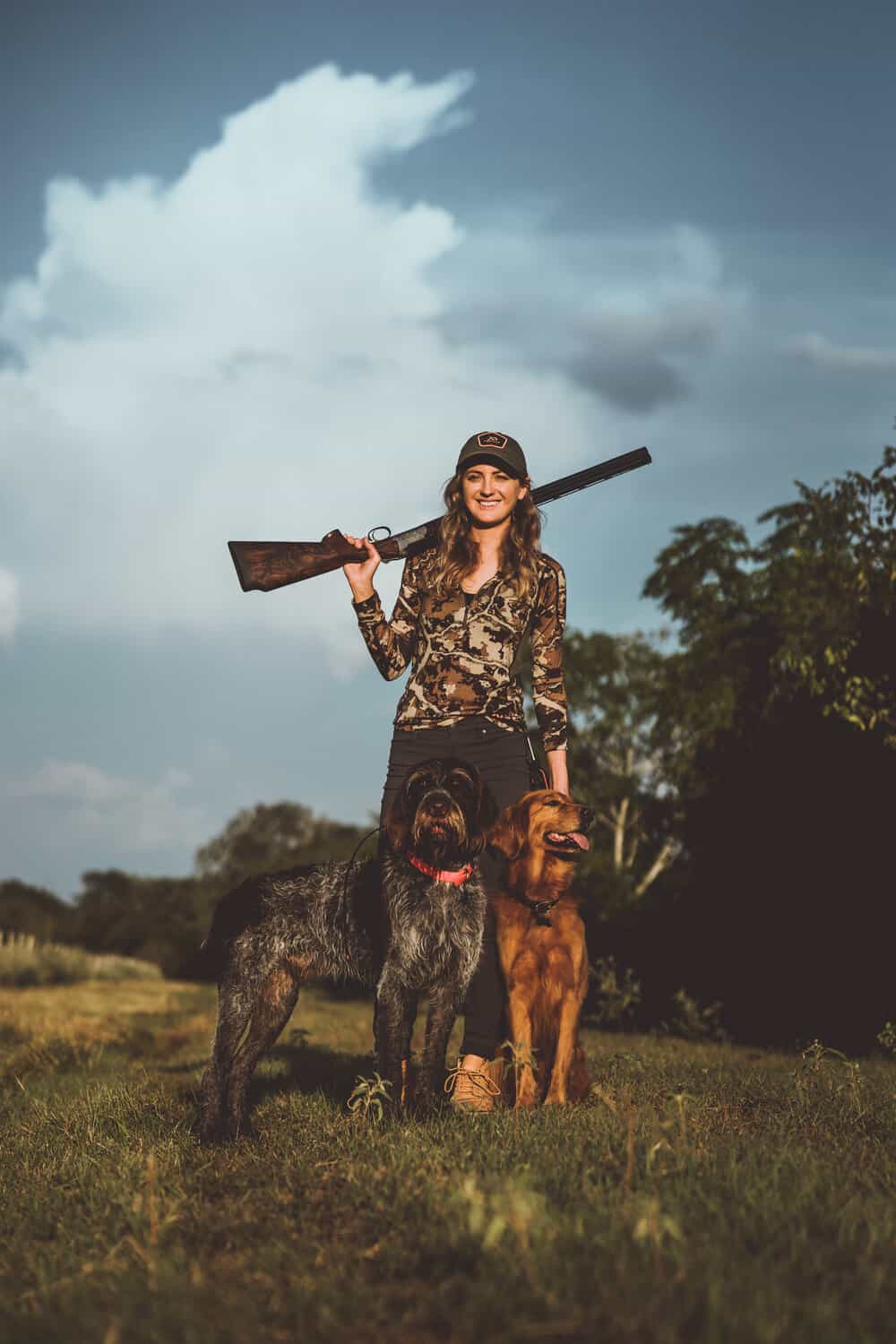
TYLER SHARP: Tell us a bit about yourself, your background, and how you discovered a love for cooking.
DANIELLE PREWETT: I have the best job in the world: I hunt wild places in search of wild foods. Using these ingredients, I develop and share recipes for one of the top media companies in the outdoors industry, MeatEater, Inc. However, if you had told me this is what I would be doing for a living 15 years ago, I would never have believed it.
Hunting and cooking wild game was not part of my original plan for my life. After earning my degree in apparel design and manufacturing, I aspired to build a career along that trajectory. I quickly learned that I despised many aspects of the fashion industry, and working in it left me feeling empty. During this time, I was living a very unhealthy lifestyle. My health issues led to dietary restrictions, which forced me to learn how to cook with real food and not the processed junk I had been surviving on. I began to experiment in the kitchen and noticed a drastic improvement in my physical and mental health. I discovered that food isn’t just calories, it’s information, and the quality of what I consume matters. It didn’t take long for me to fall in love with the process of creating a beautiful dish. I started working at a well-known kitchen retail store that offered hands-on cooking classes. There, I learned foundational cooking techniques, but aside from that, I primarily taught myself.
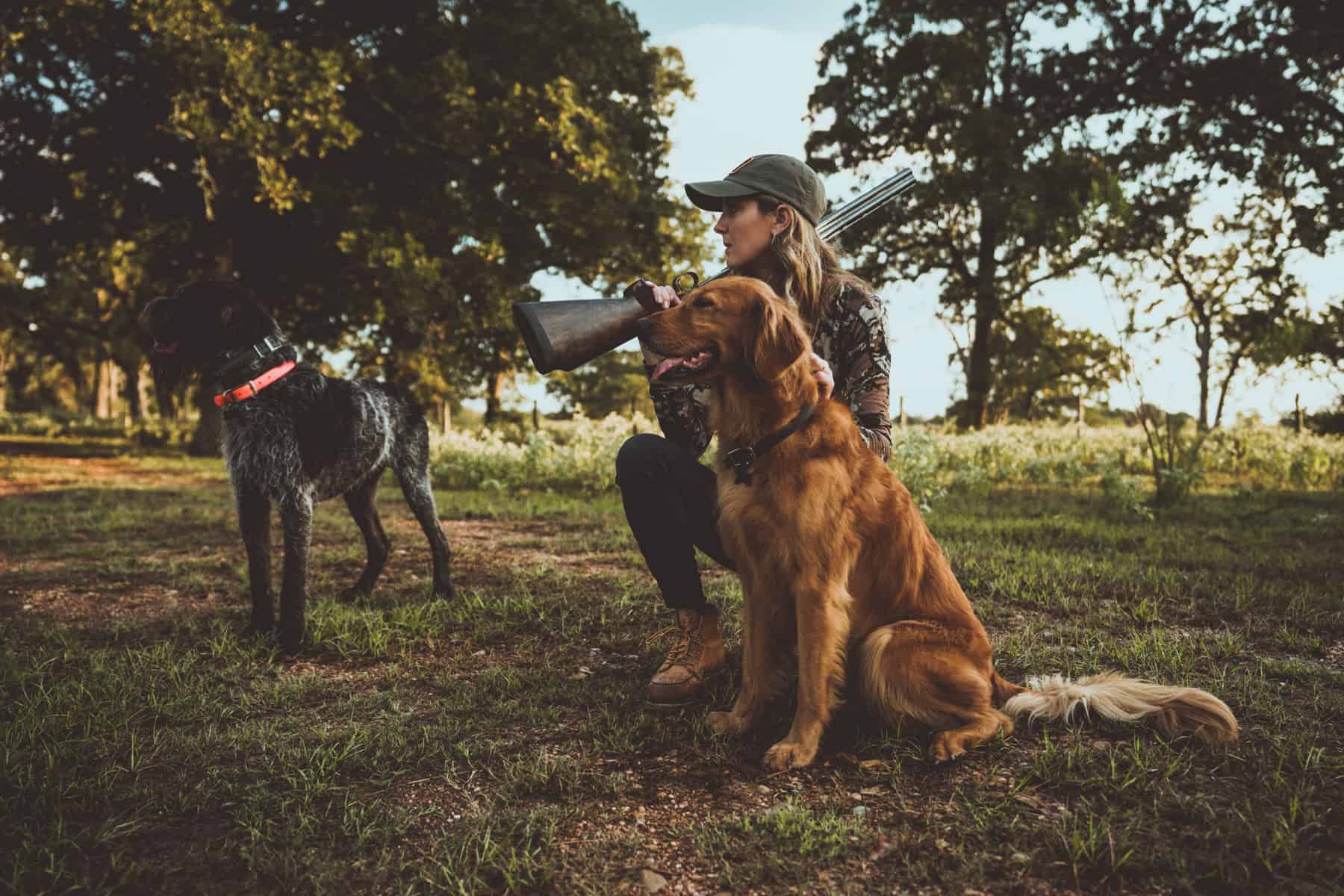
TS: At what point did you shift toward a focus on sourcing wild game for your recipes? Were you always a hunter? Tell us a bit more about that journey.
DP: My father grew up hunting on a farm in South Dakota. He raised our family in Texas and attempted to take me hunting a few times. I’ll admit that I wasn’t interested until I met my husband, an avid hunter and angler. I relished the opportunity to cook the wild game he brought home to me. Initially, I was drawn to the exclusivity factor, the exciting opportunity to work with something that can’t be bought. One of the most fascinating aspects of cooking with wild game is that every animal is unique. They’ve lived different lifestyles, in different places, consuming different foods. These factors influence the taste and texture of the meat, something I believe should be celebrated.
A move to North Dakota from Texas in 2012 was life-changing. I received my hunter’s safety education, got a license, and began to tag along on hunts. These moments had a significant impact on me as I continued to spend more and more time in the field. I’ll always remember the first pheasant I ever shot. It was on a small tract of land owned by the Corps of Engineers, flushed from the cattails by my golden retriever, Marina. The wave of gratification I felt from that meal was unlike anything else I had cooked before, and I wanted to experience that every time I sat down to dinner. My perspective on meat began to shift, and I couldn’t stomach watching my dollar support factory-farmed meat. I decided to rely on the land instead of the grocery store, and I’ve never looked back. Today, my husband and I hunt and fish for all of our meat.
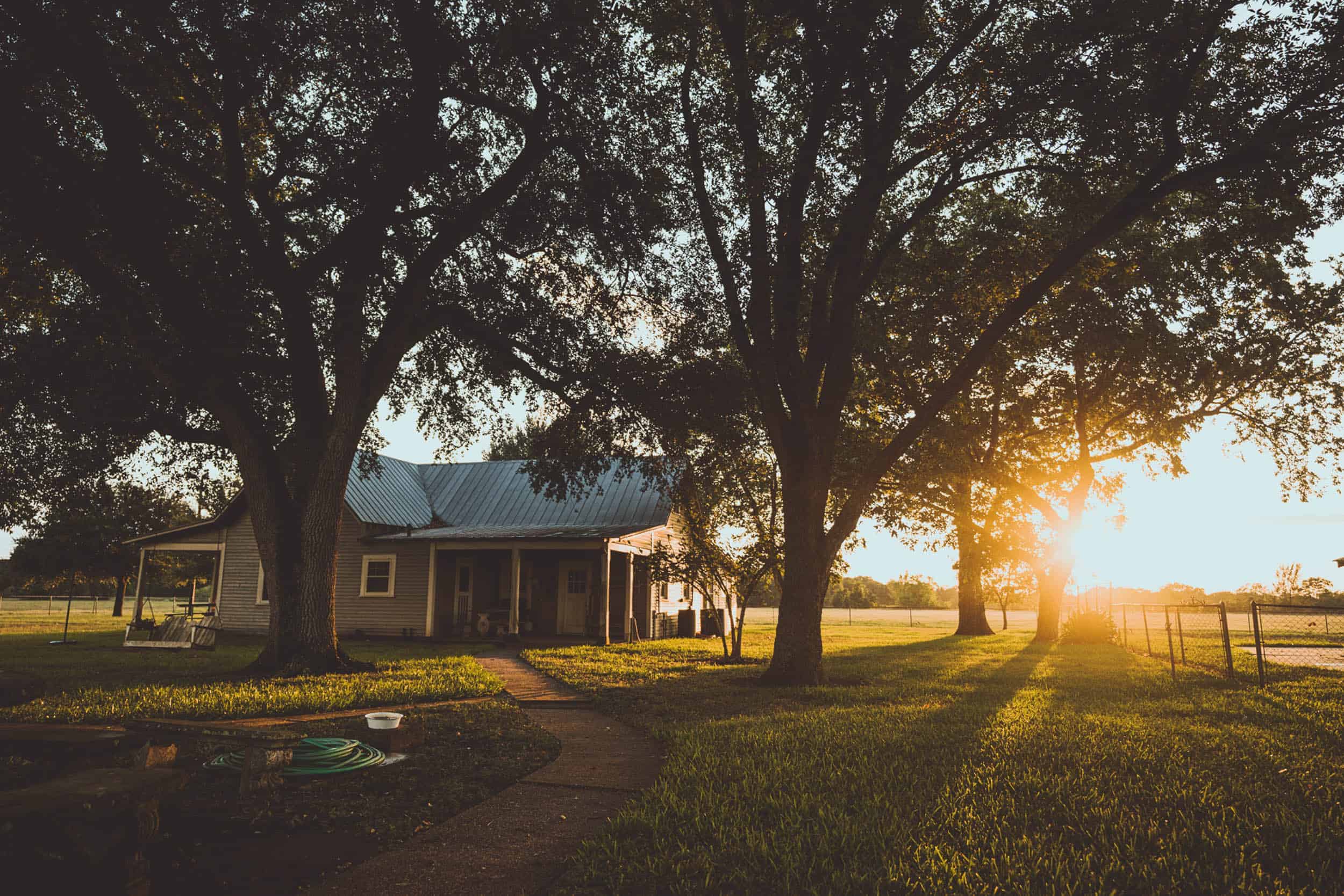
TS: Tell us a bit more about your Wild and Whole project, and some of the things you’ve got going on there. What are you most proud of in this journey so far? What’s been difficult?
DP: Wild and Whole started as a passion project; I never expected anything to come from it. Cooking and photographing food was a creative outlet. Now it’s a way for me to express a meaningful way of life and to explore what it means to connect with food. I want to help others learn how to cook and enjoy a variety of wild game in healthy, everyday meals.
There were certainly some growing pains along the way. In the early days, I was working a full-time job, teaching yoga at night, and hunting every weekend to fill the freezer. I worked on Wild and Whole during the little spare time I had and struggled to grow a social media audience. As a female in the hunting industry, it can be tempting to fall into the influencer trap, where the only way to get sponsorship is to gain a large following. Many companies incentivize a certain type of behavior purely for marketing purposes, and I didn’t feel like that was sending the right message. It is incredibly important for me to be genuine; otherwise, the energy put into Wild and Whole wouldn’t be fulfilling. Today, I align myself with brands like First Lite that support females who are passionate about hunting. I believe that authenticity is appreciated by many other hunters, both male and female.
I am incredibly fortunate to operate Wild and Whole full time, as the Wild Foods Contributing Editor for MeatEater. This position has granted me a lot of amazing opportunities, and I get to work with some of the most influential people in the industry.
TS: It seems that you often like to focus on unusual cuts of animals, or the “odd bits” that many people would overlook using. Can you talk a bit more about this focus and some of the challenges you’ve faced while doing so?
DP: I love exploring the versatility of meat and believe in eating everything — nose to tail. For me, it’s a way of respecting the animal that died by not letting the meat go to waste, plus they’re incredibly nutrient-dense. In addition to eating the odd bits, I want to push the boundaries within our community about what is edible. We have preconceived beliefs of what is good and what isn’t. These ideas seem to pass from generation to generation, forming unfounded myths. I’m talking about the classic recipe for cooking jackrabbit, where you “simmer with aromatics and a rock for 12 hours, throw the rabbit out, and eat the rock,” which is a mindset that I would like to change.
TS: What does your hunting community look like? Do you prefer to hunt with partners, or do you hunt solo?
DP: My hunting story begins in North Dakota, which is a state with a lot of opportunities in both wild game and access to land. Hunting has a significant presence within the community where I lived in the southwest part of the state. I typically hunted with my husband and two bird dogs, a golden retriever and a Deutsch Drahthaar. However, it wasn’t unusual to join a hunt with other men, women, or even children. As much as I love camaraderie, there is something undeniably special about hunting alone. Inevitably, I found myself loading the dogs up in the car and driving out west to hunt sharptails on Theodore Roosevelt’s stomping grounds in solitude. Hiking across the grasslands in search of flighty birds with a dog at my side is an experience I will always treasure.
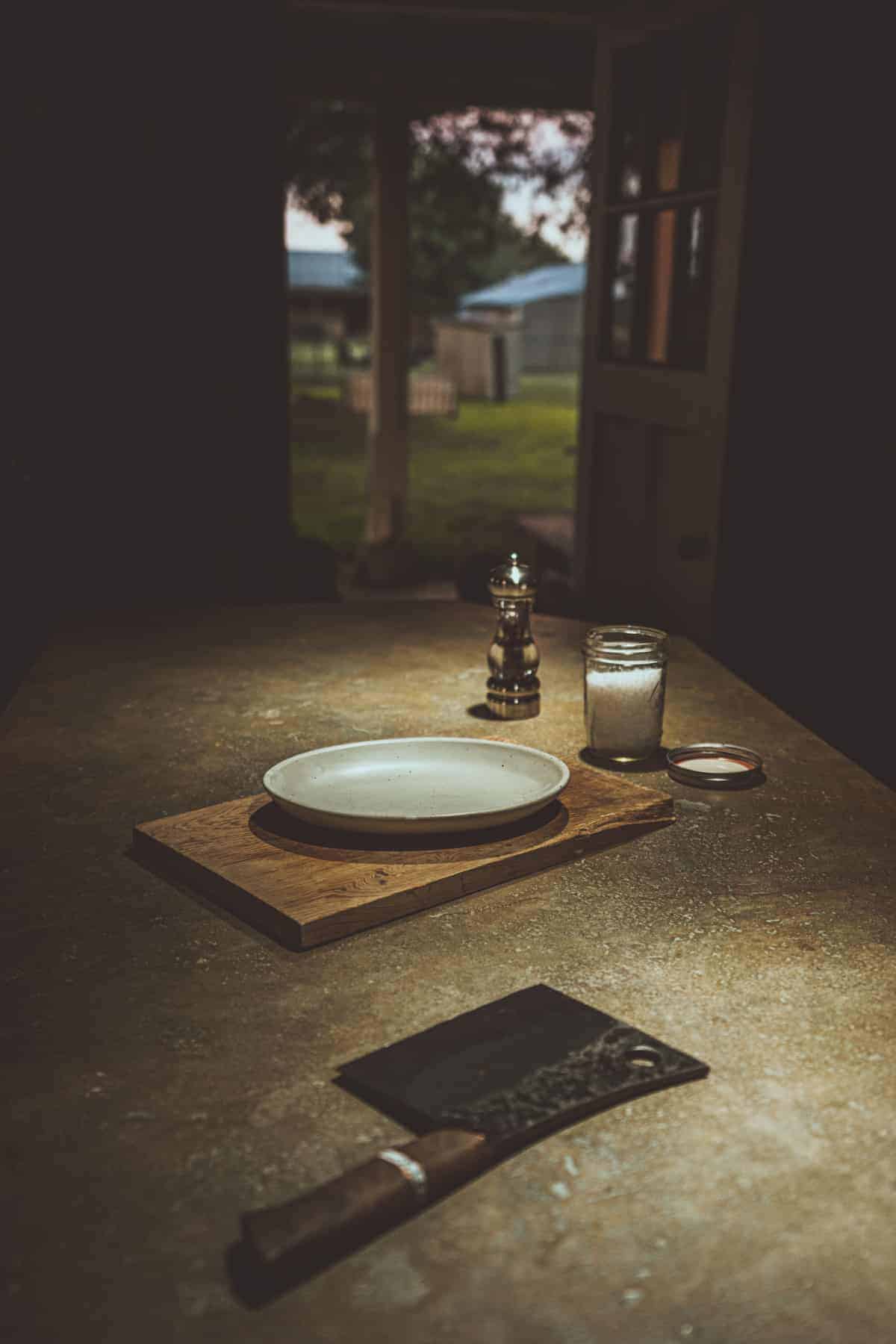
I now call Houston home, and my hunting community has drastically changed. I still hunt with my husband often, but rarely with anyone else. Hunting in Texas is male-dominated and mostly done on private ranches. A lot of the women I know don’t want to hunt; thus, the invitation to hunt deer or quail is typically limited to my spouse for a “guys only” weekend. I try not to take this personally; it’s not about me, it’s about changing the dynamic by being the only female in an all-male camp. If we wish to see our hunting community grow, we must keep the door open to anyone who wants to hunt.
Whether through foraging, hunting, or teaching folks how to process animals, you are in a sense reintroducing some to a way of life that many of us have moved away from: having a connection with our food.
TS: What’s your take there? Is it necessary to be connected to our food?
DP: Today, people take meat for granted. We look for convenience and ease, and certainly don’t want to be reminded of the uncomfortable truth that our meat was once a living animal. We are afraid of carrying the burden of eating ethically and prefer to let others assume the responsibility.
It was early into our relationship when my husband brought a deer home from a hunt. He was content with processing the meat alone in the garage, but something inside me realized that I should be helping. I saw my food in its original form, and for the first time in my life, I felt responsible because I would eat several meals off that deer.
So, I picked up a knife, having absolutely no idea what I was doing, and processed the animal with him. This seemingly simple moment in life had a massive ripple effect. Since then, I have hunted or processed nearly every animal eaten in our home over the last several years. This is what it means to connect with food. It’s to acknowledge, value, and understand where it comes from. When you become a part of the story, eating no longer becomes just another meal to fill your stomach or excite the taste buds—it has meaning.
From a chef’s perspective, I believe whole-heartedly that involving the family in the kitchen is crucial. If you’re a hunter, start by cooking wild game together, and then dive deeper by processing meat as a reminder of the life you are eating, and the work required to put food on the table. This involvement cultivates a connection to food. Connection develops into gratitude; gratitude inspires stewardship of our resources for future generations.
TS: To follow up, do you think that people should have more interest or concern with where their food comes from?
DP: Of course. When we lose sight of where our meat comes from, we undermine the value of not just the protein on our plate, but also the resources required to produce it. We are at a pivotal point in time where we are bombarded with false, generalized statements that eating meat is bad for our health and planet. As consumers, we are responsible for the choices we make, and we should connect to our food in whatever means available to us. I’d love to see more people consider hunting as a sustainable way of harvesting food, but I realize it’s not realistic for the majority of folks. The best option is to buy directly from the source—in other words, cut the middle-man out and stay away from industrialized, mass-produced meat companies that have inhumane animal practices or degrade our environment. This takes effort; do your homework and research online retailers who offer sustainably sourced seafood or practice regenerative farming and purchase from their website. You can also visit one of the many Community Supported Agriculture (CSA) online directories. CSA is a system that connects consumers to ranchers and farmers who sell produce, meat, and various homemade goods in their local area. It is a great way to invest your money into the small businesses that work hard to better the welfare of our land and livestock. Choosing to consume local, pasture-raised meat has the power to transform our food, soil and health system for good.
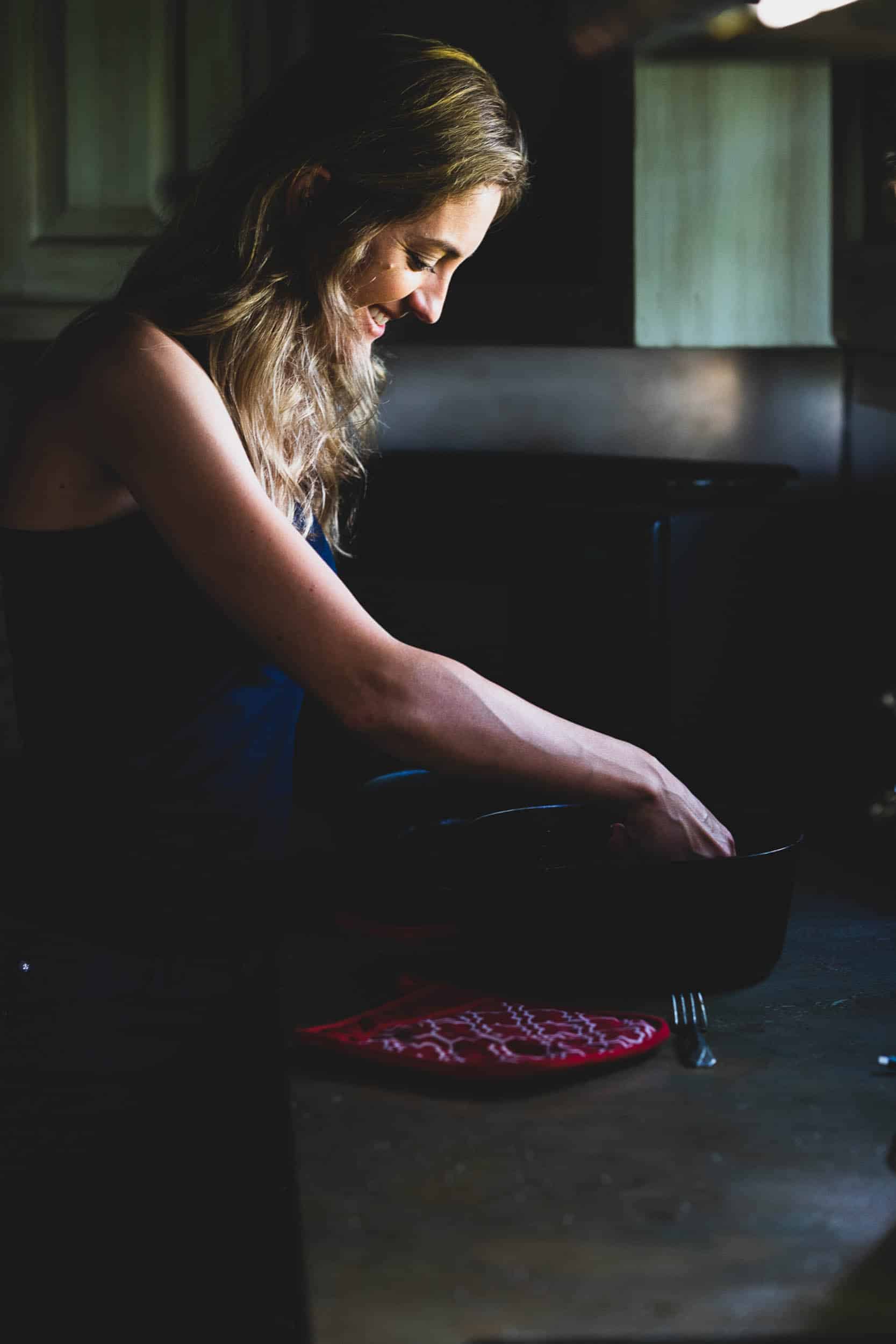
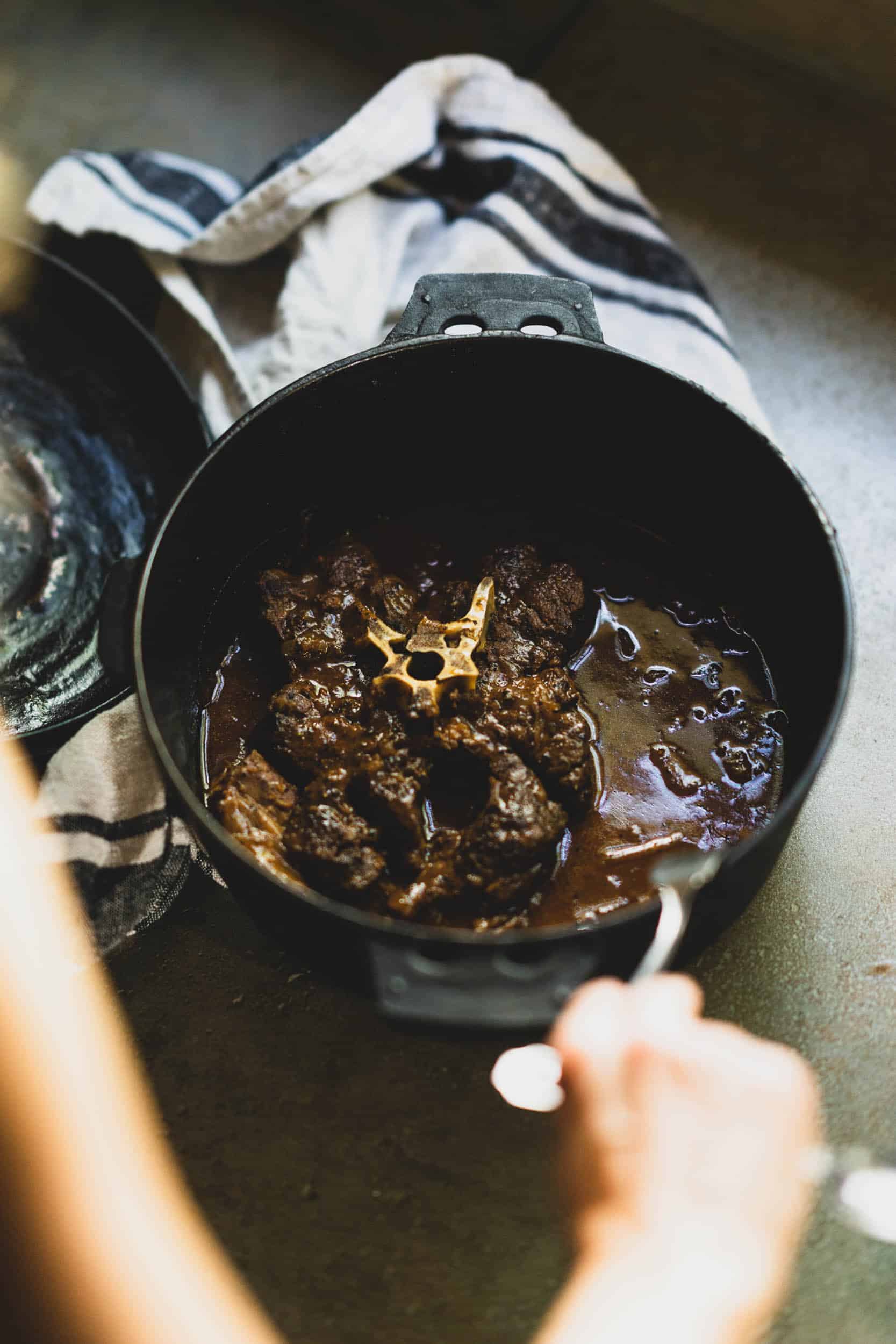
TS: Do you feel that there is an important connection between nutrition and wild game? Explain.
DP: Absolutely. I have a saying that, “You are what you eat, eats.” This means that the quality of your meat can only be as good as what that animal had been eating. I want the animals that I consume to have a diet that is natural and rich in variety, the way they are meant to, without hormones, antibiotics or a surplus of corn. Eating this way increases the nutrient density of their meat. A great example of this is to compare a pheasant to a chicken. A wild pheasant that eats grains, seeds, and insects will have vibrant yellow fat signifying a carotenoid-rich diet high in omega-3s. The pigmentation in the fat from store-bought chickens is pale.
TS: Is there anything you’d like to address about what you see as challenges for hunting, wild game cooking, or sustainable food sourcing?
DP: When deciding what to cook for this issue, I wanted to choose a cut that is under-appreciated and that has symbolic value. I saved the neck from a deer, bone-in, and cut it crosswise into four-inch-thick slices the same way I would a shank for osso buco. This changes the texture of the meat when cooked, because you’ve cut against the grain. You no longer have long strands of meat, but small clusters that tear away on the fork between the dissolved connective tissue.
When the neck is processed this way, you can see the vertebrae and spinal cord running through the center. It’s a beautiful portrayal of a lesser-known cut and references one of the biggest challenges facing our wildlife: Chronic Wasting Disease (CWD). This prion-based neurological disease is present in the nervous system of affected animals and is detrimental to cervid herd populations. Funding is needed to research disease transmission, how to manage it, and whether CWD will jump the species gap to potentially pose a risk to humans. Hunters need to keep hunting, test their ungulates, and follow state guidelines when transporting their game. In areas where CWD is prevalent, it’s advised that the meat be deboned and the carcass disposed of according to local agency regulations. If tested positive, the meat should be disposed of appropriately as well. I can’t imagine how difficult it must be to kill, then throw away an entire animal. When I cook this particular cut, it’s a stark reminder of the issue at hand, and I am grateful for the opportunity to eat it.
As heavy as it may feel at times, I am constantly reflecting on the weight of my actions in regards to food. This quote by Michael Pollan always strikes a chord with me: “To eat with a fuller consciousness of all that is at stake might sound like a burden, but in practice, few things in life can afford quite as much satisfaction.” I often contemplate this statement through the lens of hunting. When I eat wild game with full consciousness of everything that is at stake, I start to think about the efforts of conservation organizations that work to protect the wildlife and public land that we love so dearly. I appreciate the landowner who devotes his time and money to creating better habitat. I worry about the diseases that plague and threaten the animals that sustain me. If you harvest a healthy animal this fall, enjoy every bit of what that meat has to offer. Yes, it takes extra time and energy to save those waterfowl legs or the brisket off a deer, but remember that it has value. There are few things more rewarding than immersing yourself in nature to hunt for your own meat. We should never take this opportunity for granted.
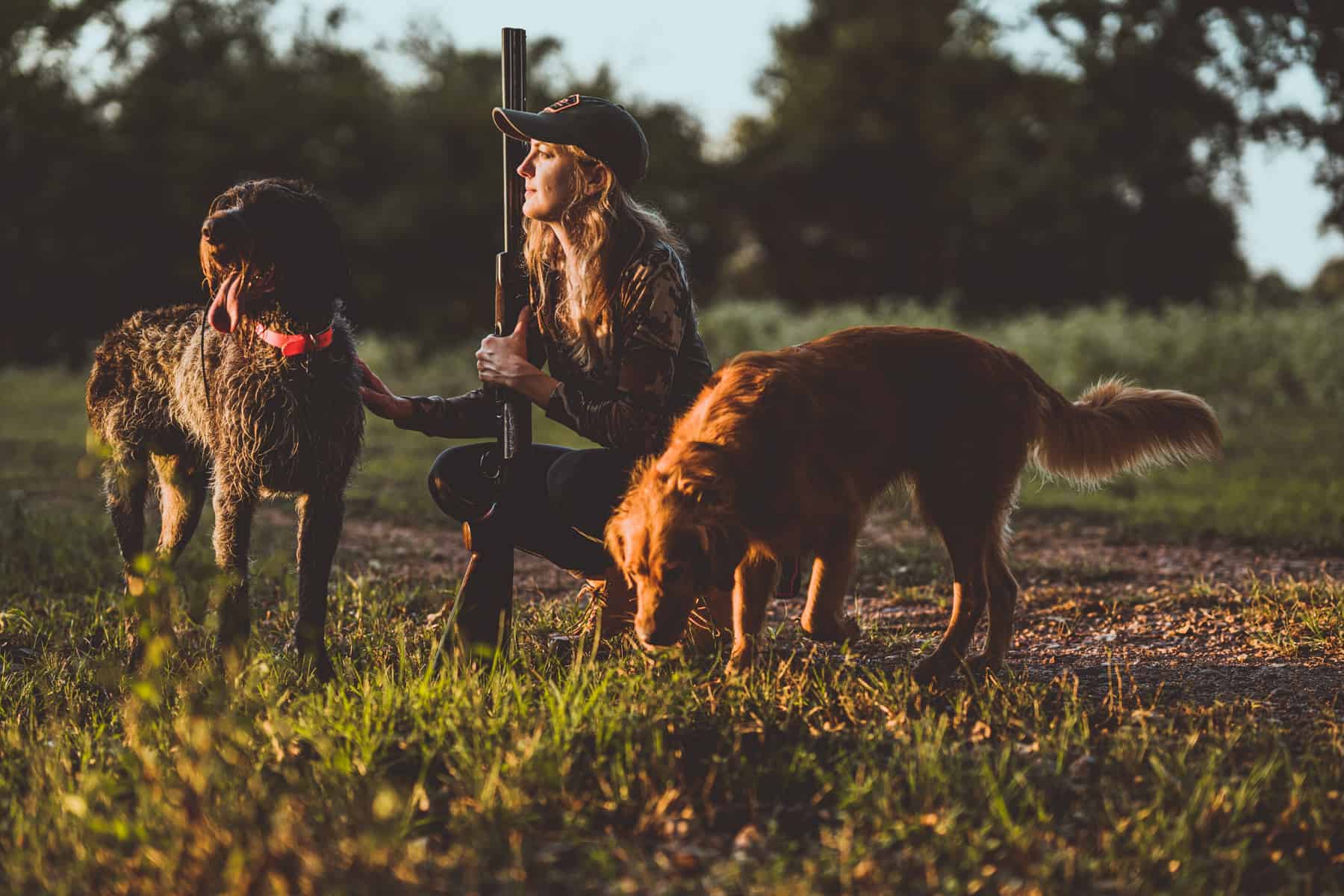
Originally Published in Modern Huntsman Volume Four: The Women’s Issue
Related Stories


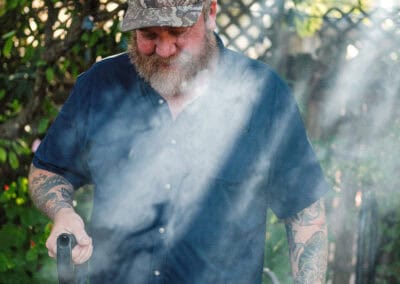
Latest Stories


